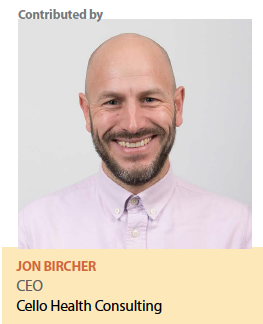Is 2017 set to be the year we see a CAR-T therapy approved?"
 My latest iPhone notification reflects the daily evolution of our industry: increased computational power, genomics, proteomics, microbiome, big data, sensor technology and health reforms – to name just a few. These changes are impacting many aspects of our business from our definition of customer or competitor, to value creation, clinical trial design and manufacturing.
My latest iPhone notification reflects the daily evolution of our industry: increased computational power, genomics, proteomics, microbiome, big data, sensor technology and health reforms – to name just a few. These changes are impacting many aspects of our business from our definition of customer or competitor, to value creation, clinical trial design and manufacturing.
Uncertainty can freeze us into doing nothing. Sometimes we delude ourselves that we can carry on as normal. But to develop good strategy we need to challenge ourselves about the future and what it will take to win.
We work alongside a variety of companies in the early stages of development. Some take a narrow view of their market, looking backwards rather than forwards for inspiration. Unfortunately many construct their commercial strategy too late, and end up trying to plug gaps in a poorly designed Phase III program.
We also work with businesses that recognize the need to incorporate foresight into their early development and commercialization plans. They use scenarios as a test bed for their strategy to inform choices about trial design, indication sequence, customer focus, capability build, brand development and service design.
Scenario learning is hugely valuable in Phase II and early Phase III where there are many strategic questions to be answered such as what will it take to differentiate our asset given the competitive set? Do we understand what it will take to gain access and drive use? Do we have the right capabilities and/or can we build them or should we look at licensing, partnering alternatives? Should we commit to our Phase III program? What is the right sequence of indications?
Scenario Learning
So what is scenario learning and why is relevant in strategic planning for early assets?
Scenario learning is not new but it is an important planning discipline, especially in light of exponential environmental changes. Scenarios help us map out what different futures could look like. They blend art and science, past experience and future dreaming. But they need to be tangible, and work best when they describe relationships between systems, technologies, customer trends, market forces and competitor intentions. At this stage it’s not about prediction or probability but stretching ourselves to build a plan that caters for multiple future worlds.
Every project is different but there are some basic ingredients in any early commercial strategic planning project:
1. ISOLATE THE KEY DECISION
The future is an extremely big topic. Before we start it is vital that we agree the strategic decisions to be taken, the timeline and the questions we wish to explore. This will ensure the scenarios are focused and relevant. Deciding which indications to explore for a new platform technology requires a different set of scenarios to those for understanding how to differentiate a new asset.
2. RESEARCH THE FUTURE
It is likely that you will need a mixture of desk research, primary research and competitive intelligence but the goal is to determine the ingredients likely to influence your future.
3. SCENARIO IDENTIFICATION
Here we prioritize the most influential and unpredictable factors and use them to form different scenarios — remembering that each scenario should be plausible, distinct and stretching.
4. CHARACTERIZE SCENARIOS
To ensure the scenarios are tangible we build the “logic" — a description of the whole system of events, trends, influences and influencers. It is often useful to bring scenarios to life through infographics, newspapers or even short films.
5. DEVELOP PLANS AND OPTIONS
Scenarios are not the ultimate goal. They are the framework for decision making and building a solid early development and commercialization plan that works irrespective of future worlds. They also allow you to consider strategic options and contingency plans.
6. TRACK AND KEEP THEM ALIVE
It’s important to define early warning signals and continue to track and learn from your market, adapting and narrowing the scenarios and assessing strategic implications.
In an increasingly uncertain and rapidly transforming market, scenario learning is a vital tool for building a robust strategy. It requires deeper understanding, greater foresight, clear strategic thinking and a degree of imagination. Done well it enables the development of a strategy that holds up in the face of even the most unpredictable changes.(PV)
For more than 20 years, Cello Health Consulting has been supporting clients to solve complex commercial decisions, applying the right fusion of senior industry and consulting expertise to suit their unique situation, team, and goals.
For more information, visit cellohealthconsulting.com.










